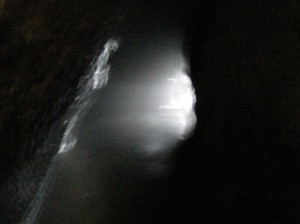Of course our mobility, physically and intellectually, has gleaned immeasurable wealth and benefits for us. We are a world wise, multi-cultural, fully mapped society. But we are bored [even though we can’t admit it]; nothing is hidden, it’s all so easy. We can be anywhere anytime [worthy of its own blog entry]. So I have to wonder about standing still.
“My grandfather, on the contrary, and despite his life’s persistent theme of hardship, took a great and present delight in the modest good that was at hand: in his place and his affection for it, in its pastures, animals, and crops, in favorable weather.
He did not participate in the least in what we call “mobility.” He died, after eighty-two years, in the same spot he was born in. He was probably in his sixties when he made the one longish trip of his life. He went with my father southward across Kentucky and into Tennessee. On their return, my father asked him what he thought of their journey. He replied: “Well, sir, I’ve looked with all the eyes I’ve got, and I wouldn’t trade the field behind my barn for every inch I’ve seen.”
In such modest joy in a modest holding is the promise of a stable, democratic society, a promise not to be found in “mobility”: our forlorn modern progress toward something indefinitely, and often unrealizably, better. A principled dissatisfaction with whatever one has promises nothing or worse.” Wendell E. Berry
Part of me envies this connection and believes the loss of this intimacy with the land, and loss of value seen in localness has ruined us – but wasn’t it inevitable that we explored, then wandered until it became common to never dwell anywhere fully? So now we question; in the midst of unhappiness, war, and climate change we wonder about the price of mobility, and accessibility.
Simply put, if we don’t stop moving we can’t see the immensities involved in locality. If we can not make this connection how can we connect to each other?
I was born in Pennsylvania. My parents took me to Wisconsin as a baby, then Kentucky as a young child. In the aftermath of divorce a smaller ‘we’ moved to Michigan, then Florida, South Carolina, and Georgia. I continued the trend, and moved on my own back to Georgia and Florida, then left the country for 18 months in Italy, Germany, and even Israel. When I returned it was New York, Rhode Island, and finally west to Colorado and Utah, then Arizona. By the time I had reached my twenties I had easily shifted landscapes as many times as the candles on the chocolate cake. My example may be extreme but not unusual.
My history includes me with the group of wanderers trying to place themselves. Now I am in New Zealand, the last land to be settled by man, wanting to stand still. So appropriately I ask, can a built work facilitate the reciprocity necessary for a life long dialogue with a single place? Can architecture beget belonging?


